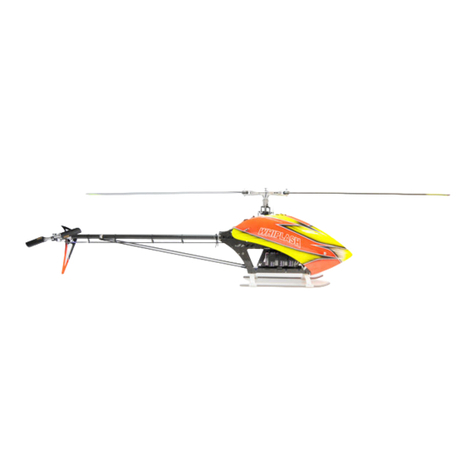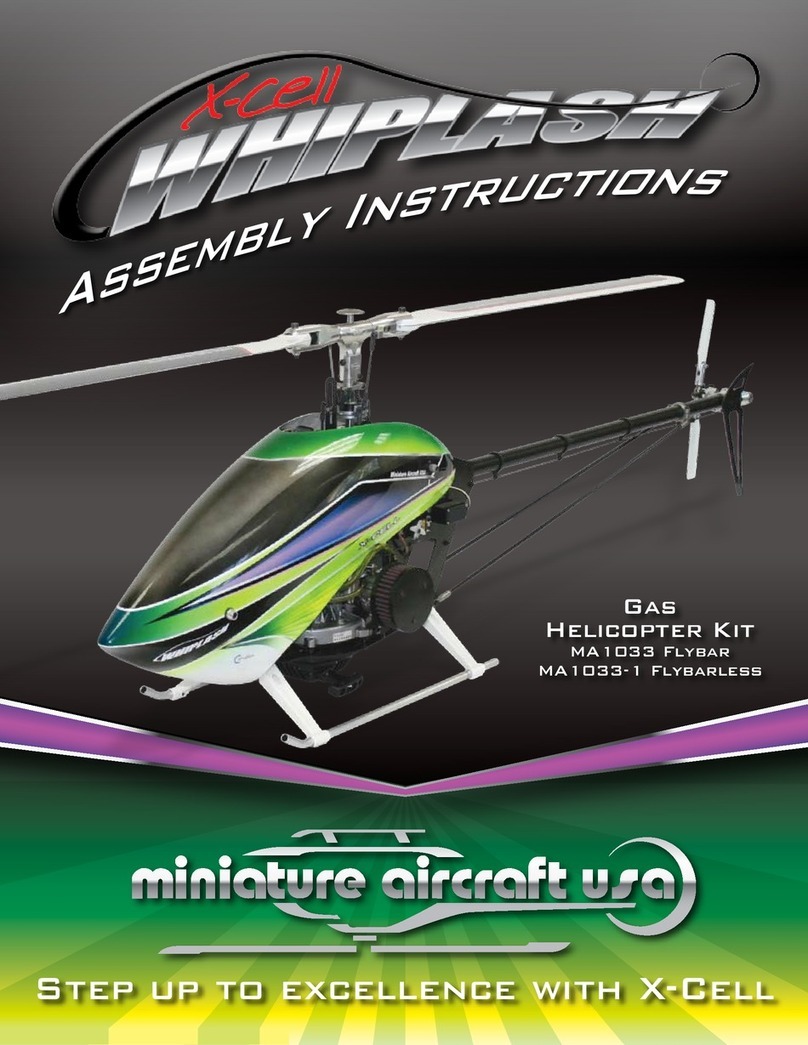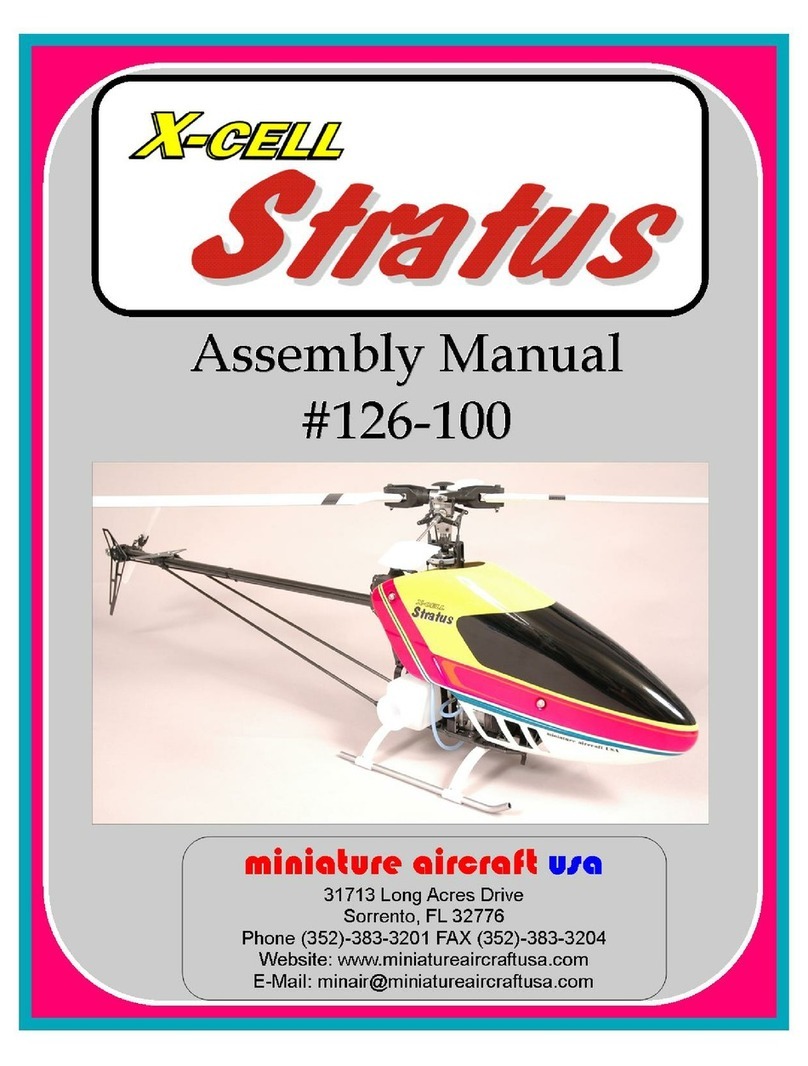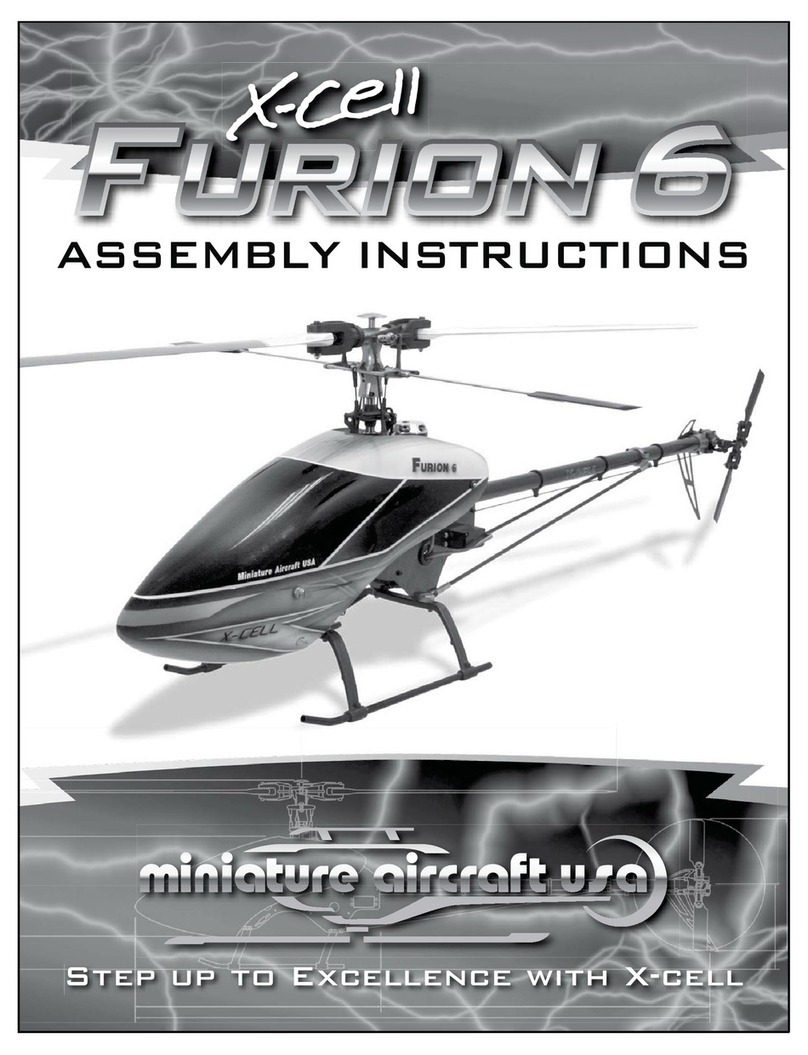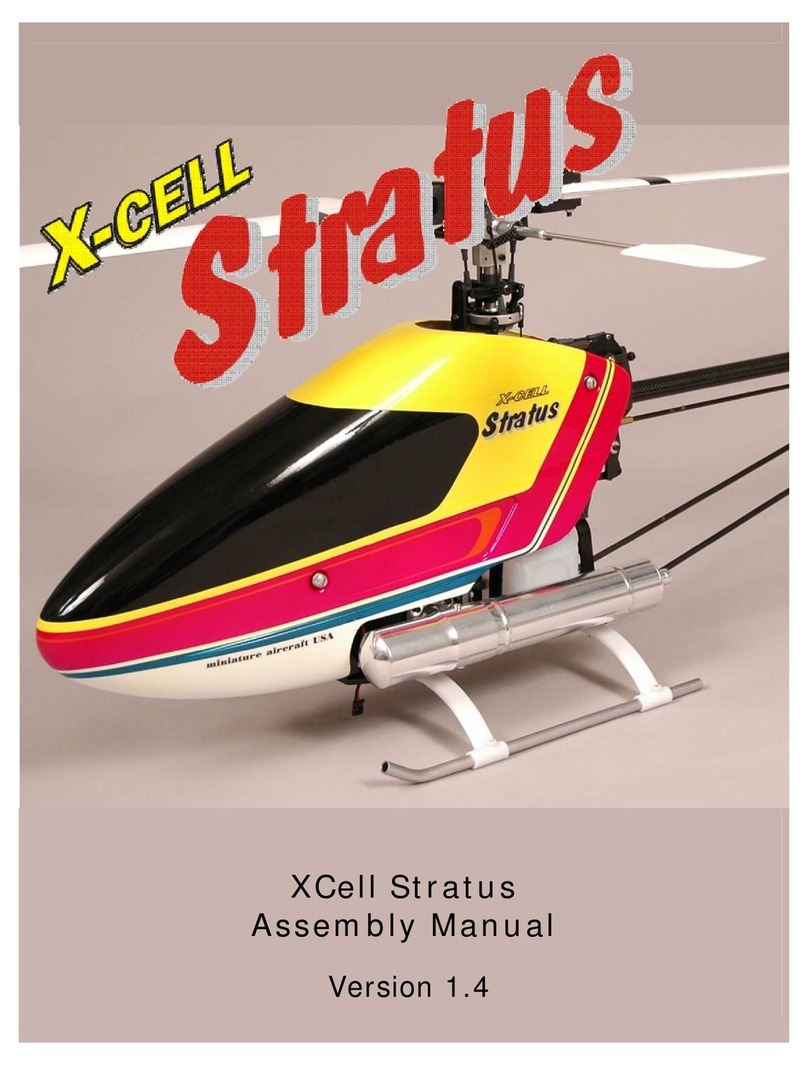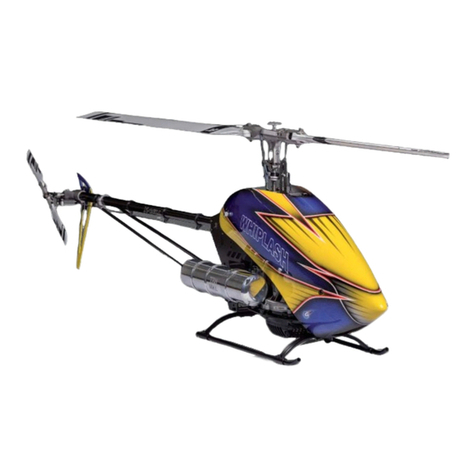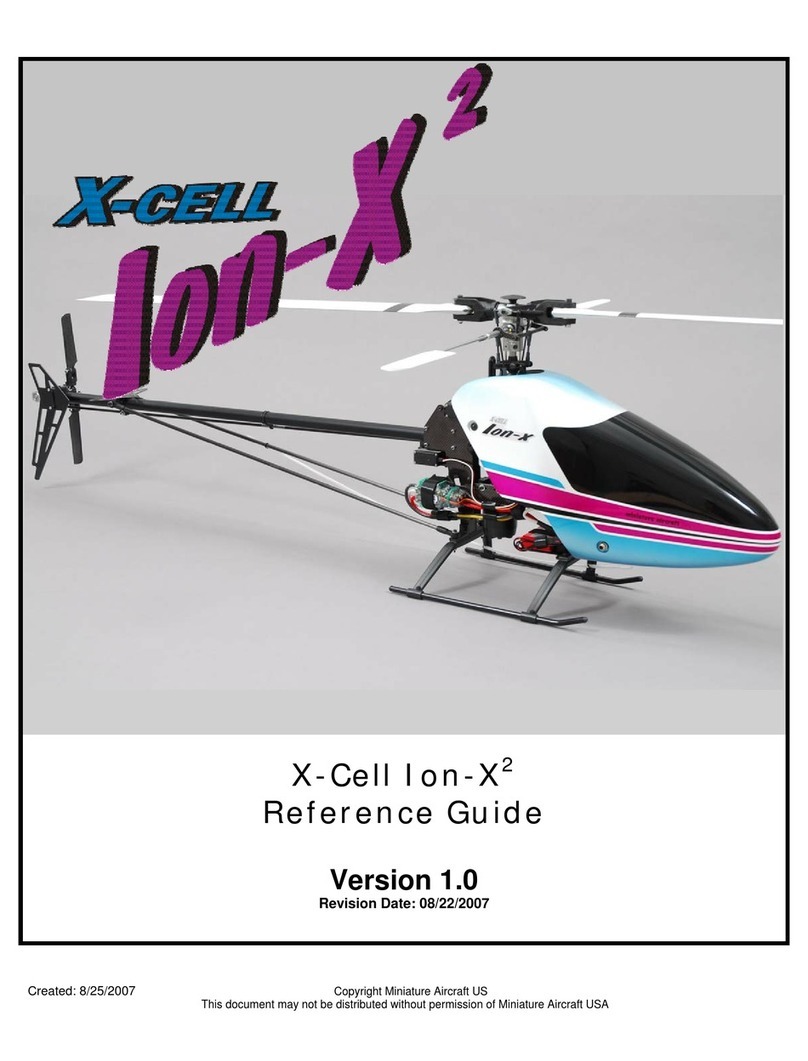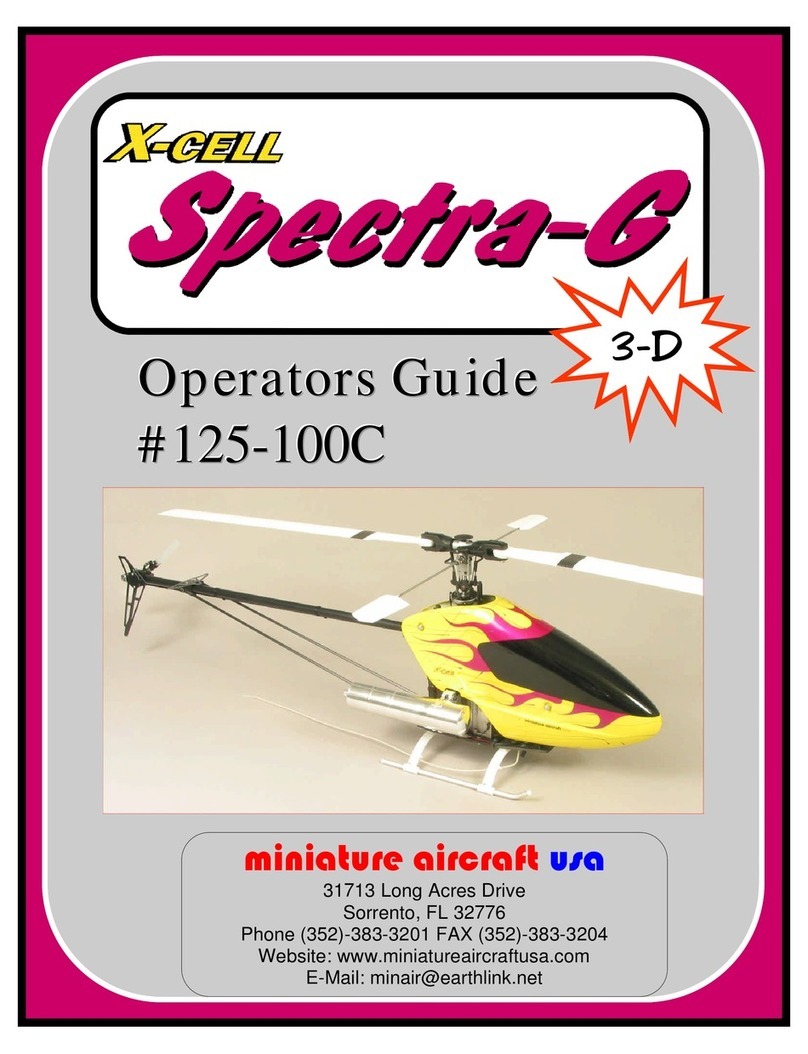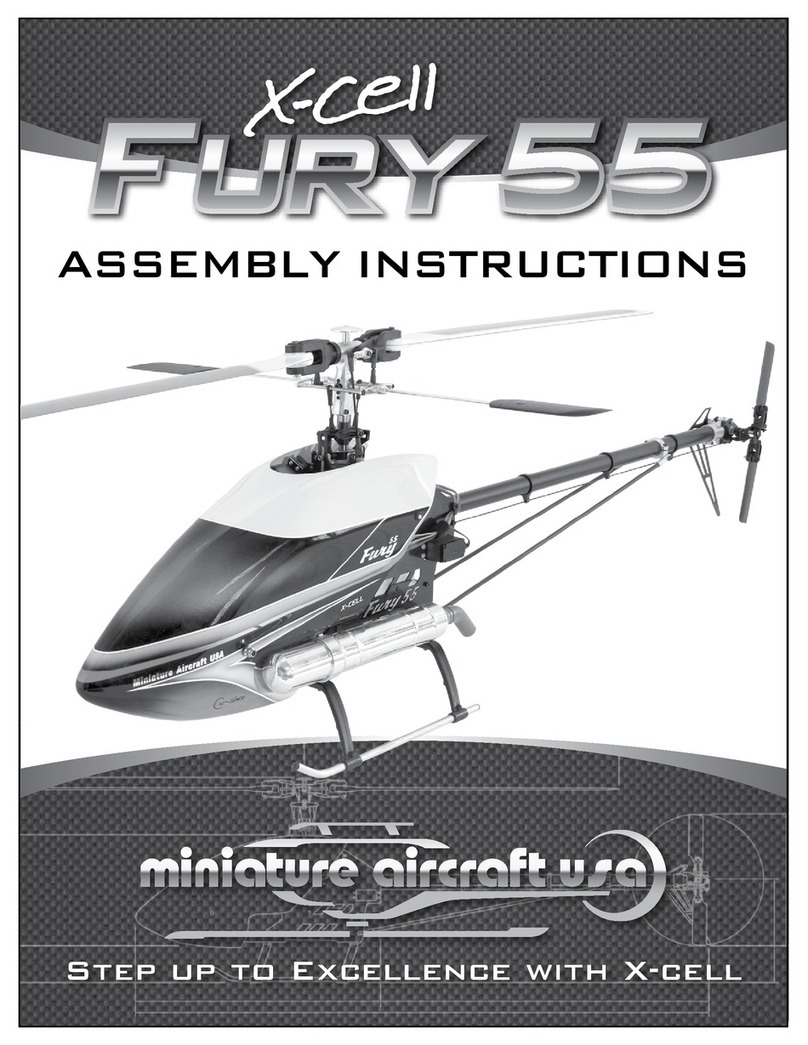
Page 2 of 67
R/C HELICOPTER SAFETY
A radio controlled model helicopter is a technically complex device that must be built and
operated with care. It is also a fascinating and challenging part of the R/C sport, the mastery of
which is very rewarding.
A model helicopter must be built exactly in accordance with the building instructions. The kit
manufacturer has spent much time and effort refining his product to make it reliable in operation
and easy to build. The essentially bolt together construction can proceed quite rapidly, giving the
builder a strong sense of accomplishment that encourages hasty progress from one construction
phase to the next, so that the completed model can be more quickly seen and enjoyed. It is
essential to recognize and guard against this tendency. Follow building instructions exactly.
Vibration and stress levels are high and all fasteners and attachments must be secure for safe
operation.
Note that this is the first use of the word SAFETY in these comments. Previously the kit
manufacturers efforts to ensure reliable operation were mentioned. That is ALL that he can do.
Safe operation is the responsibility of the builder/flyer and starts with careful construction and
continues with selection and installation of reliable radio equipment and engine.
The need for safety is nowhere greater than at the flying field. A number of guidelines for safe
flight have been developed by experienced flyers and are set down here. It is urged that they be
read, understood and followed.
GUIDELINES FOR SAFE R/C HELICOPTER FLIGHT
Fly only at approved flying fields and obey field regulations.
Follow frequency control procedures. Interference can be dangerous to all.
Know your radio. Check all transmitter functions before each flight.
Be aware that rotating blades are very dangerous and can cause serious injury.
Never fly near or above spectators or other modelers.
If a beginner, get help trimming the model first, and flight training later.
Don’t “track” the main blades by holding the tail boom. This is a temptation to builders who
cannot hover yet and is very dangerous.
Follow all recommended maintenance procedures for model, radio and engine.
WARNING
This helicopter is not a toy, but a complex flying machine that must be assembled with care
by a responsible individual. Failure to exert care in assembly, or radio or accessory
installation, may result in a model incapable of safe flight or ground operation. Rotating
components are an ever present danger and source of injury to operators and spectators.
Since the manufacturer and his agents have no control over the proper assembly and
operation of his products, no responsibility or liability can be assumed for their use.
